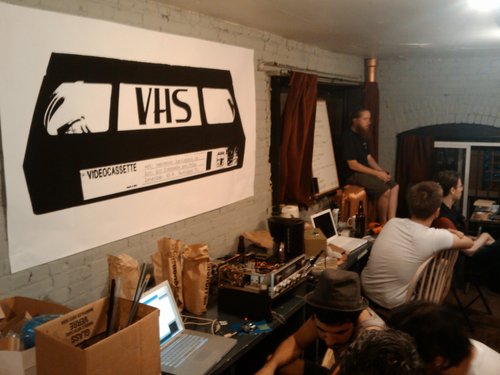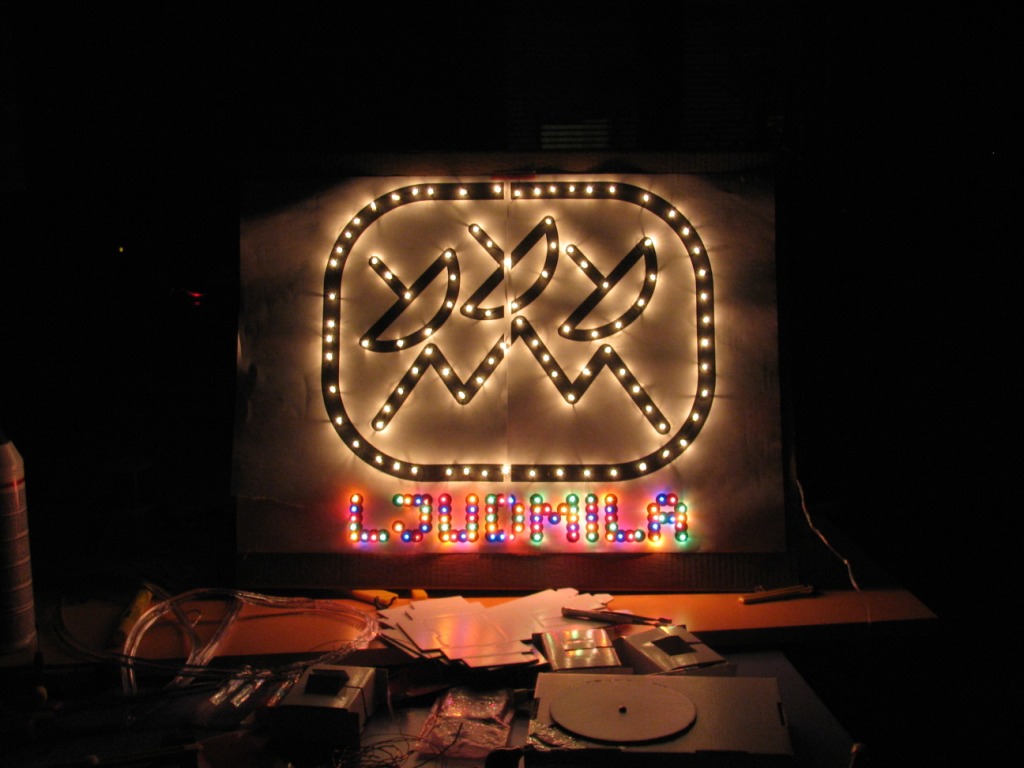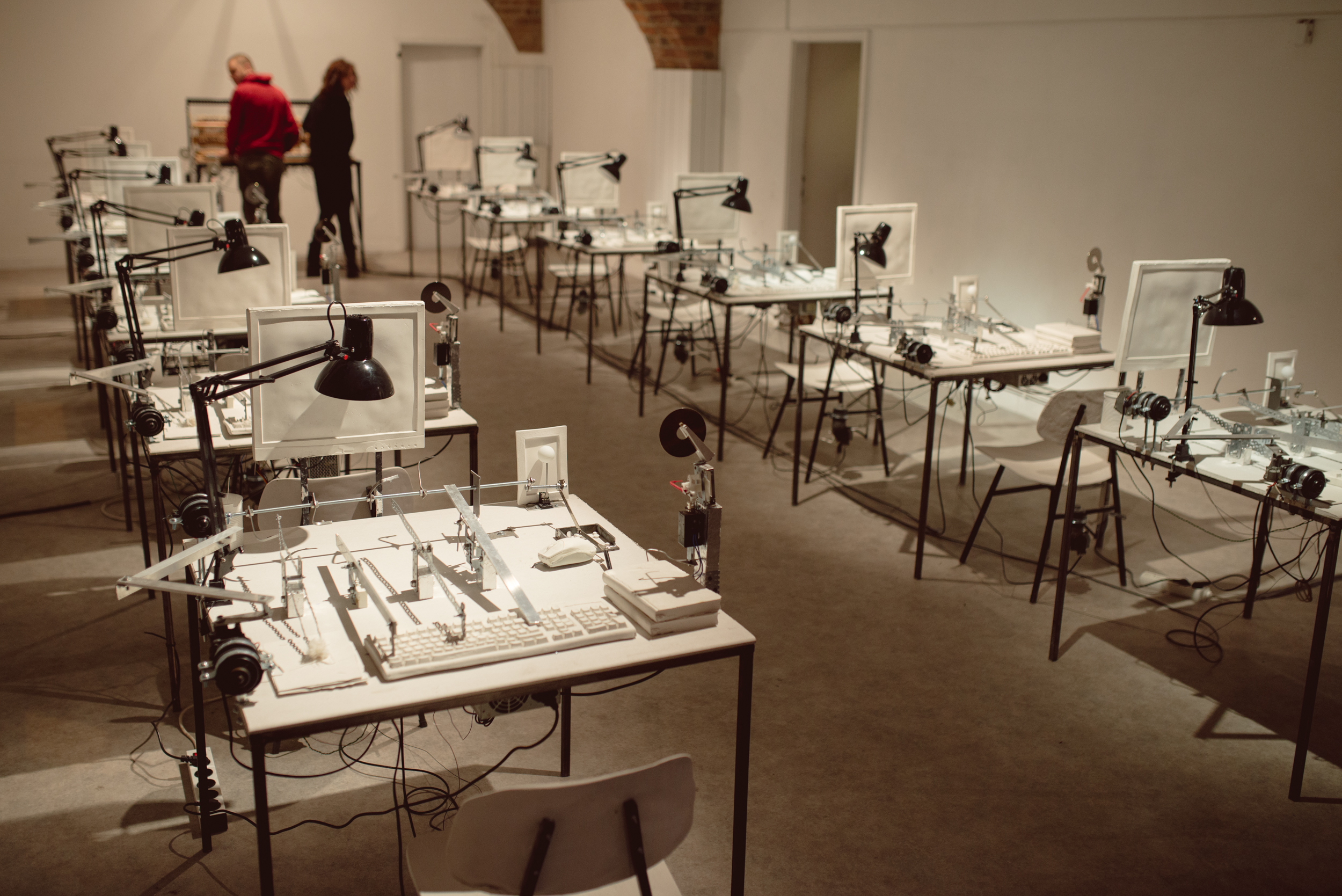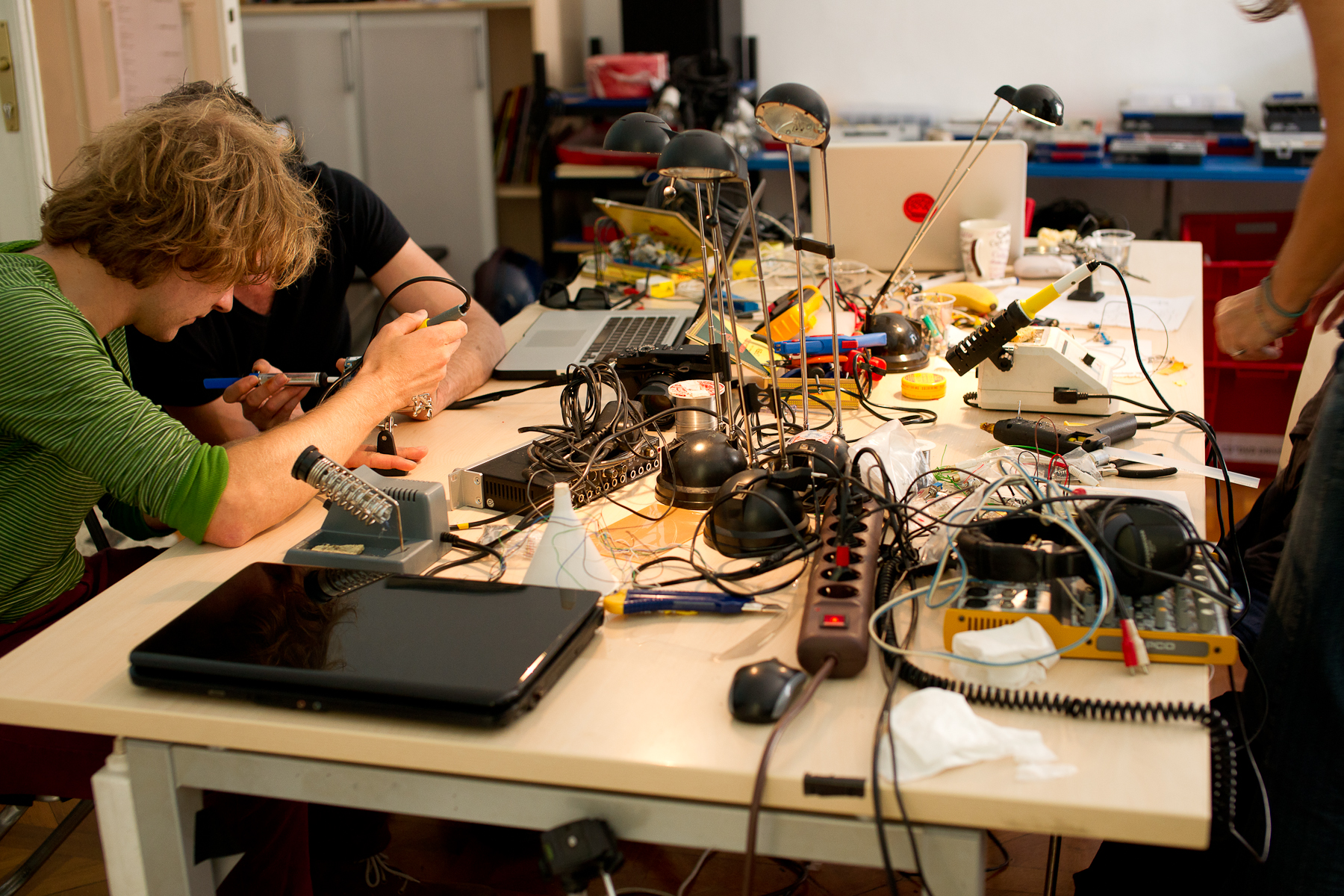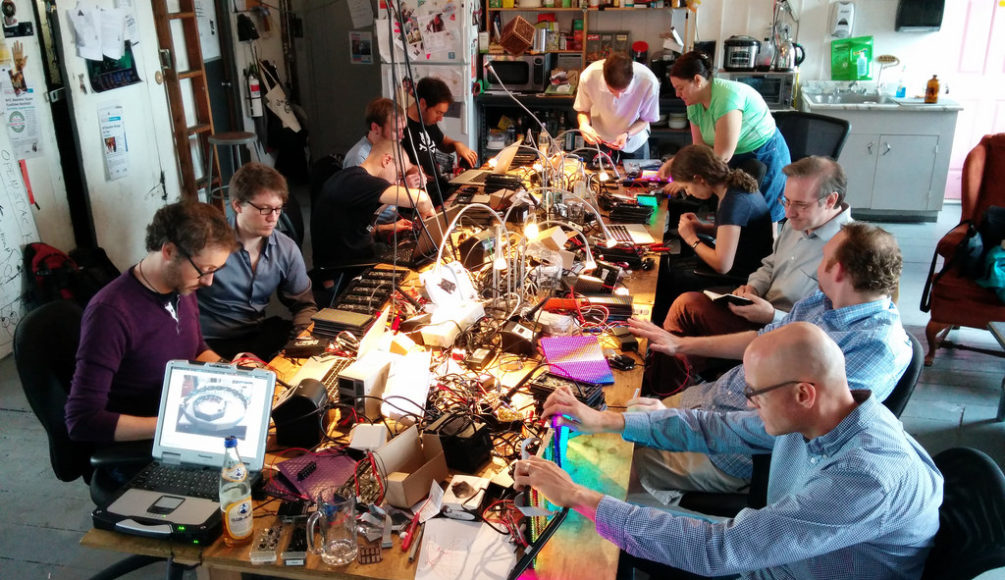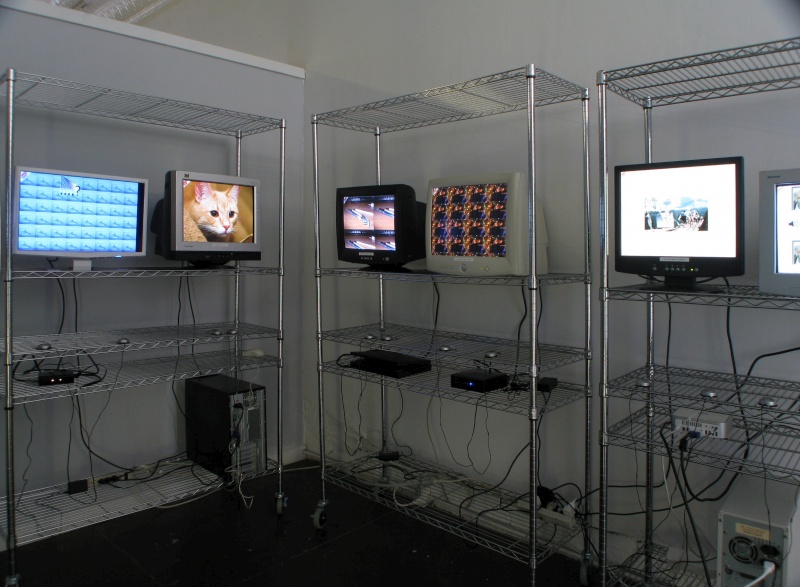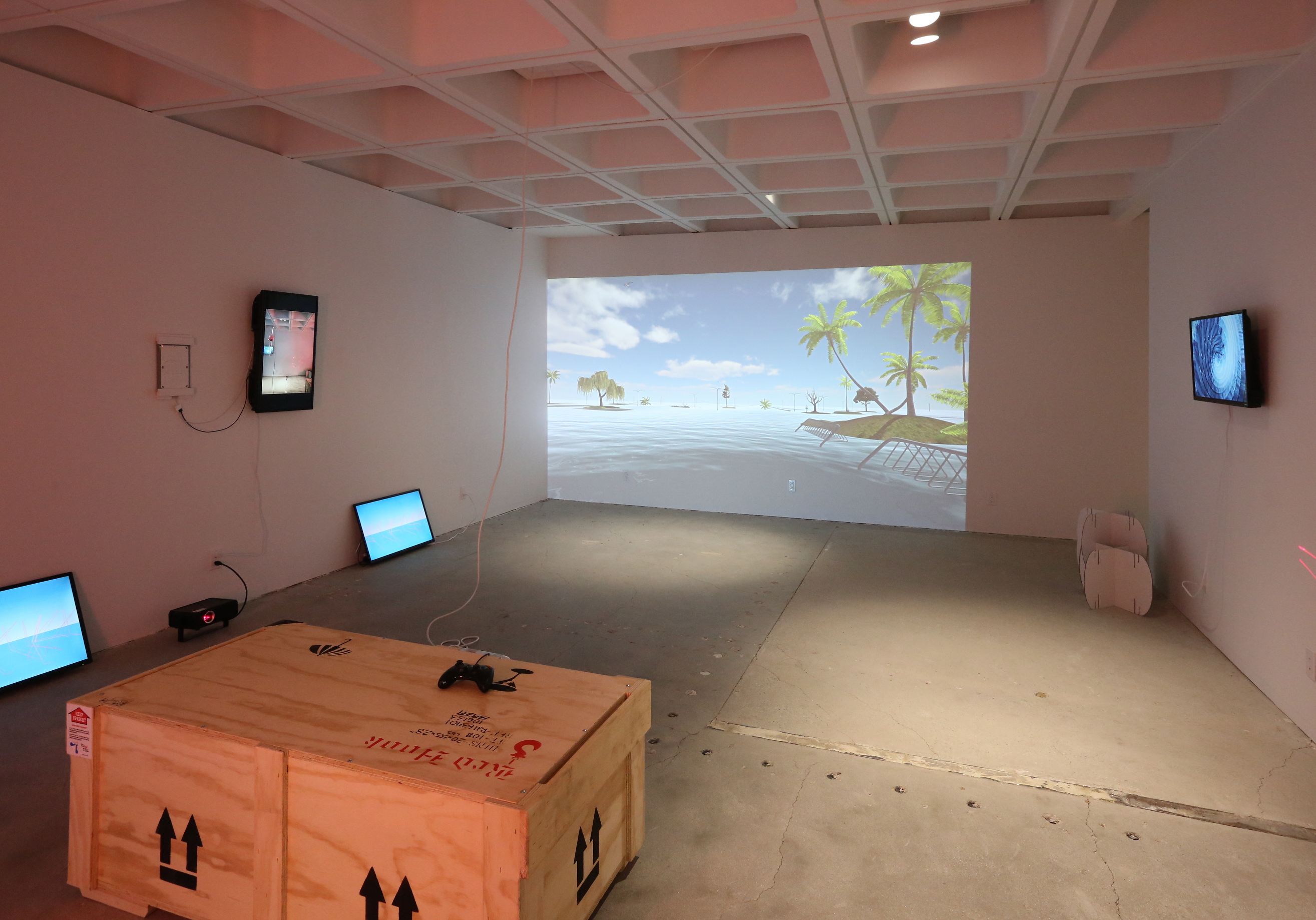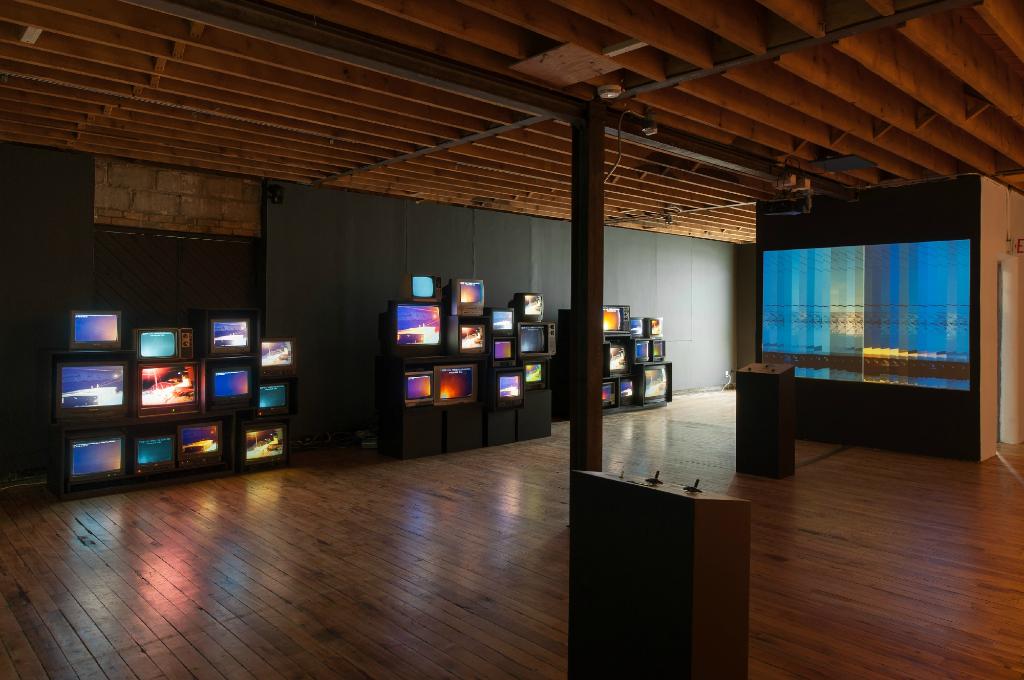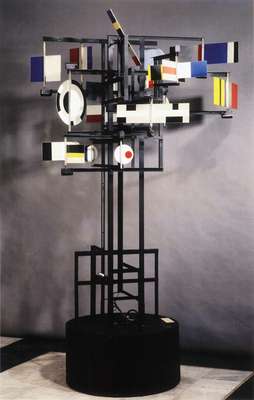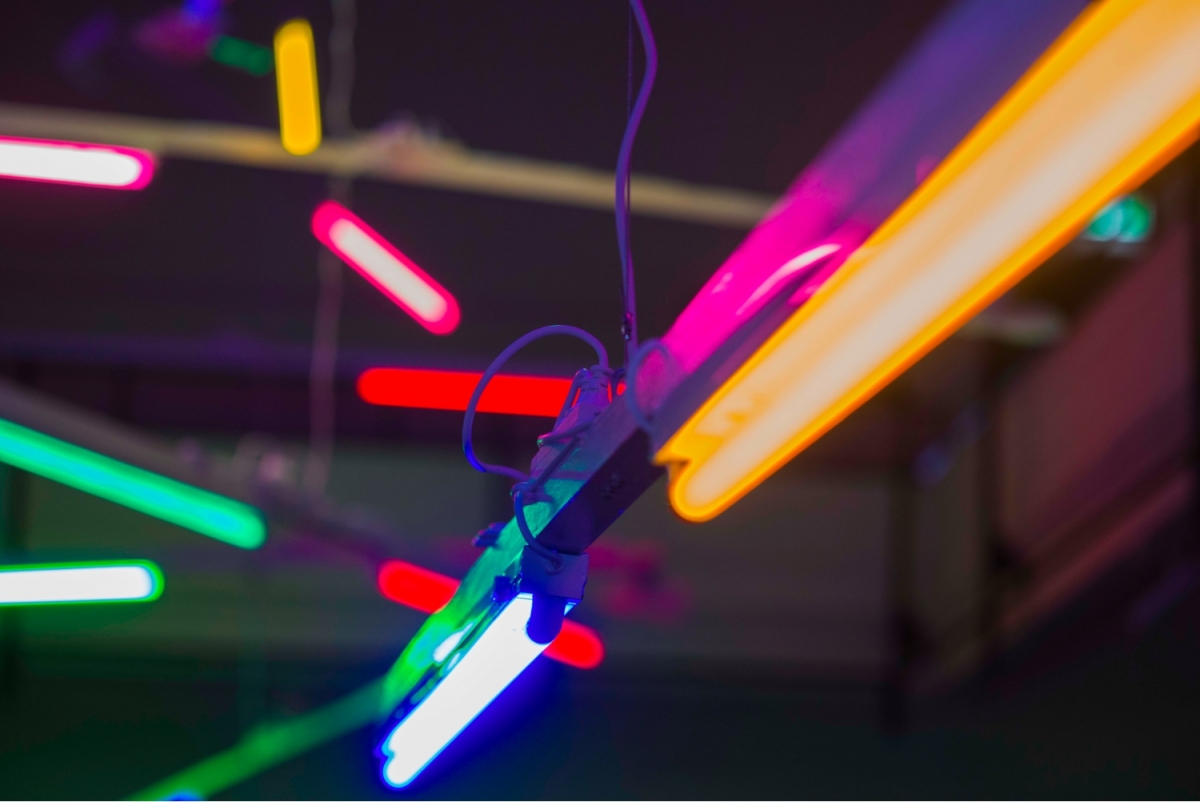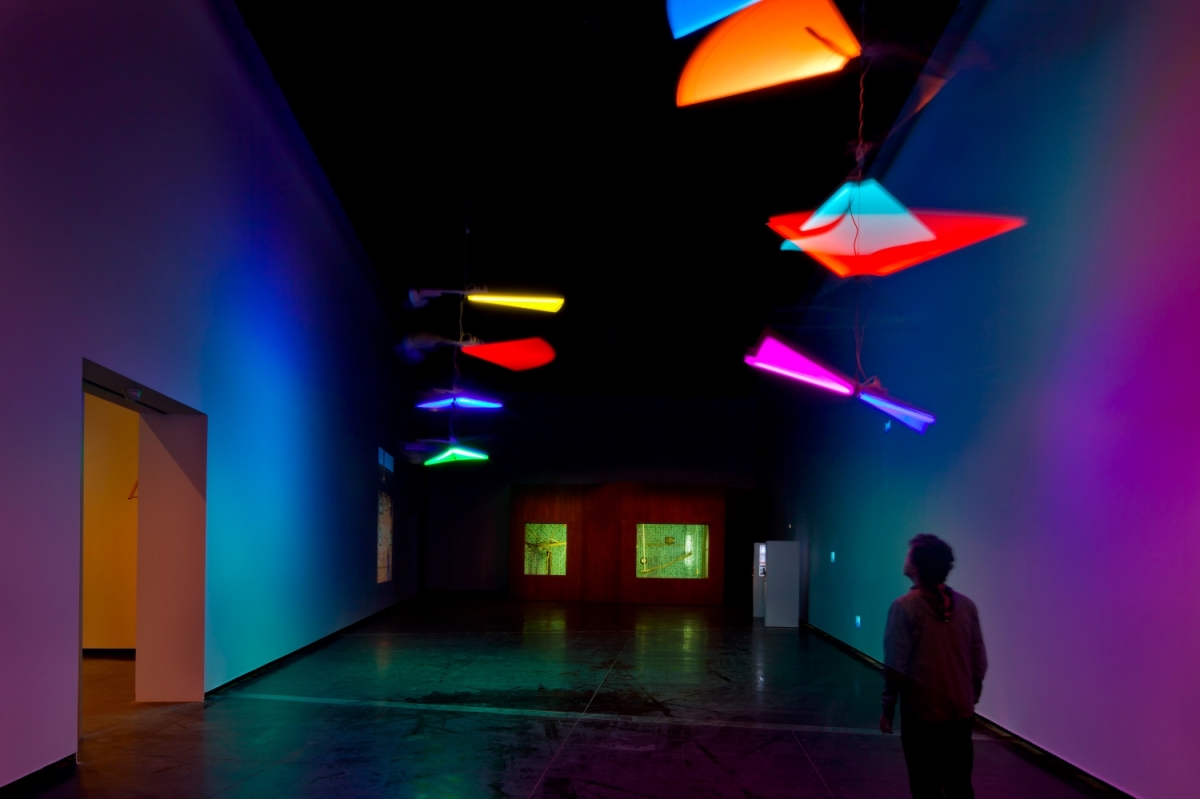Crank the Web is a browser that allows people to physically crank their bandwidth in order to see a website. Simply enter a URL, start cranking, and text and images appear in the browser window. The idea behind Crank the Web is to combine ancient forms of automation with today’s digital telecommunications technology. All bandwidth should be free and everyone should have access to the fastest speed connection. It is up to you to physically crank your bandwidth so that your internet connection will rely on your personal strength, not personal wealth.[1]
VHS provides a physical space where people can gather to share ideas, equipment, opinions, and beer. Members work on personal projects, collaborate with others, and learn new skills. More than just a studio space, we focus on sharing all sorts of knowledge within a friendly and collaborative atmosphere. VHS is the community garage for a community without garages.[1]
Many of our members share an interest in 3D printers, laser cutting, machining, crafting, electronics, robotics, programming, electronic music, and art. We welcome anyone with skills to share or an interest in learning, and strive to be as open as possible in everything we do.[1]
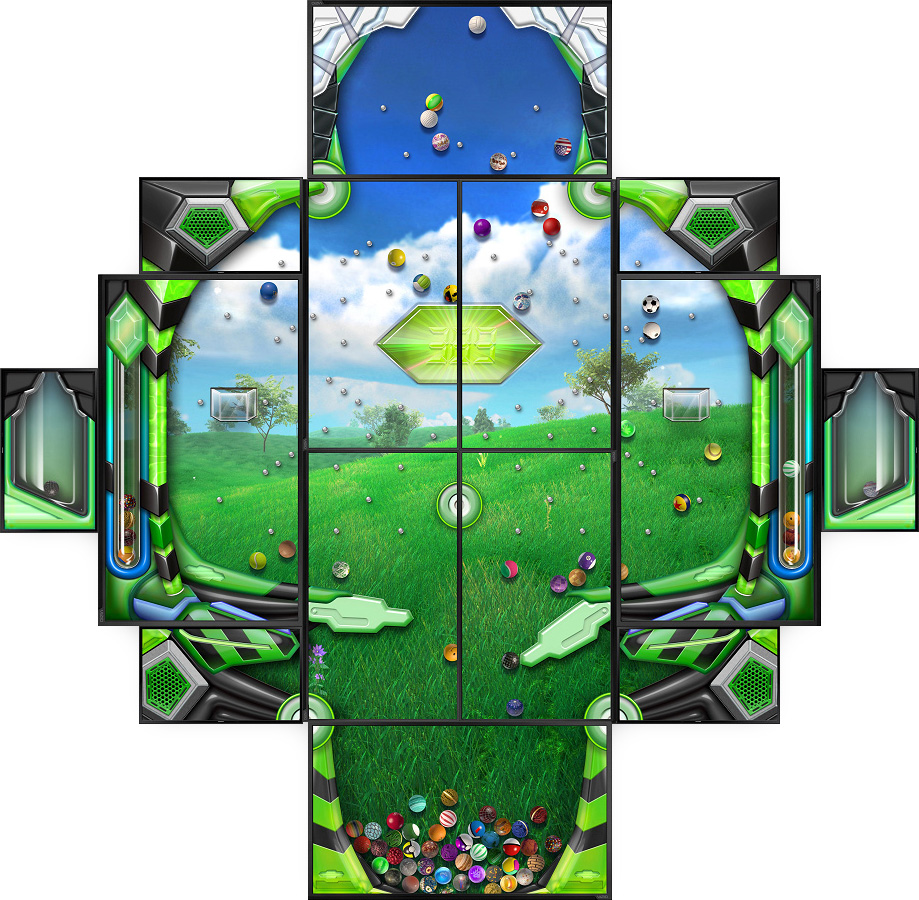 A* (2014)
A* (2014)
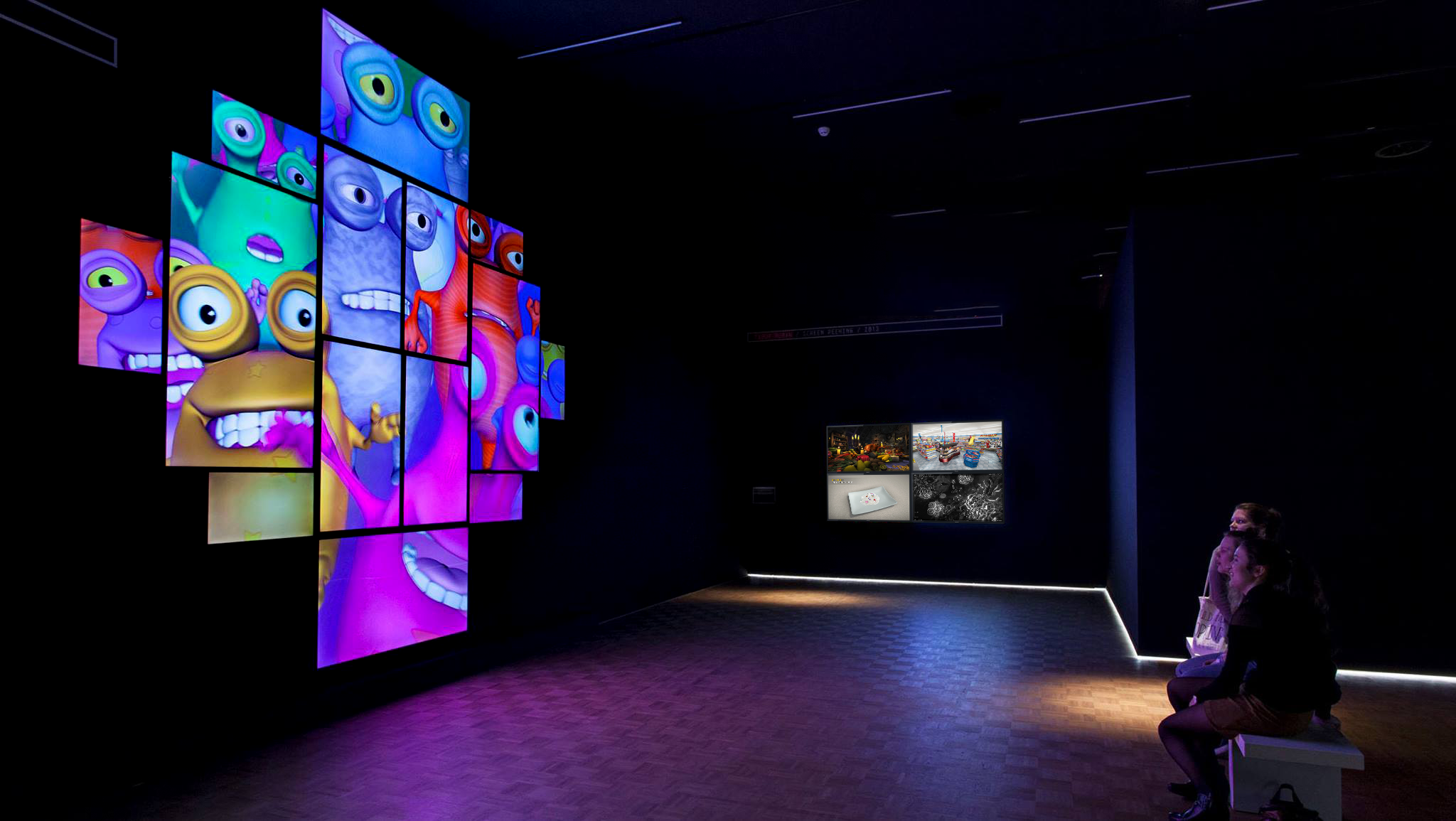 A* (2014)
A* (2014)
 Blossom (2018)
Blossom (2018)
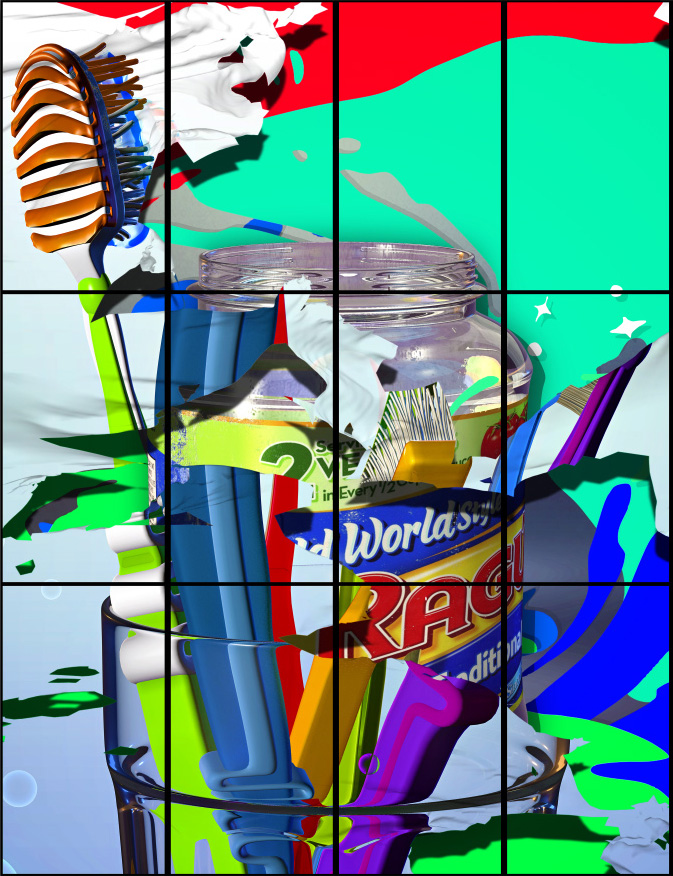 Where's My Water (2015)
Where's My Water (2015)
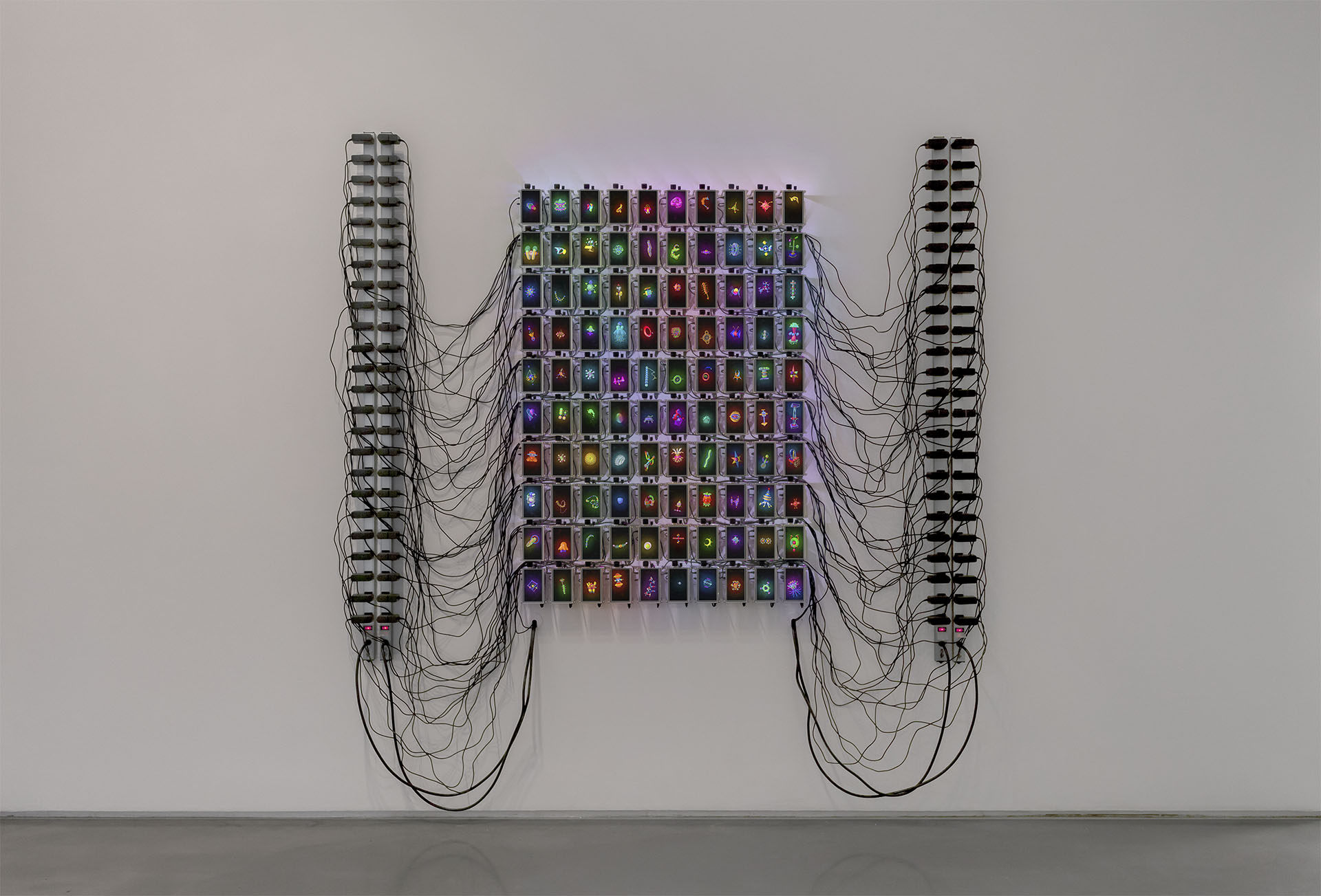 Butterfly Room (2015)
Xenix (2013)
Quantaspectra at Team Gallery NYC
SI: Visions | Tabor Robak on Video Games
Butterfly Room (2015)
Xenix (2013)
Quantaspectra at Team Gallery NYC
SI: Visions | Tabor Robak on Video Games
Tabor Robak is an American artist working in video art and electronics including live-rendering 3D graphics and custom built PC graphics installations.
Robak's early works consisted of 3D interactive environments, to be accessed on the artist's website. These pieces, which the artist described as having a "desktop screensaver aesthetic," sought to isolate digital space as a fact, an abstracted, alternate reality. Robak's work explores the visual vocabulary of modern video games, advertising and animated film, to examine societal perceptions of the digital and the real.[1]
Set up in the mid-1990s, Ljudmila Art and Science Laboratory has been bringing together technology, art, science and civil society ever since. As such, it is not only a place where hackers, researchers and artists meet, but also a platform for reflecting and modifying culture through the lens of politics, as generated by the developments in communications technologies.
Ljudmila's programmes are rather diverse and wide-reaching. It runs the Strictly Analog Festival and the art&hacking meeting PIFcamp. Since 2010, it operates the Culture.si portal and, as of 2013, also the metasearch engine and culture aggregator Kulturnik.si. Since 2011, it acts as a public lead of Creative Commons Slovenia. It organises workshops on the uses of open source software and on making DIY technological hacks; supports the production of new media artworks; has an orchestra; and more. [1]
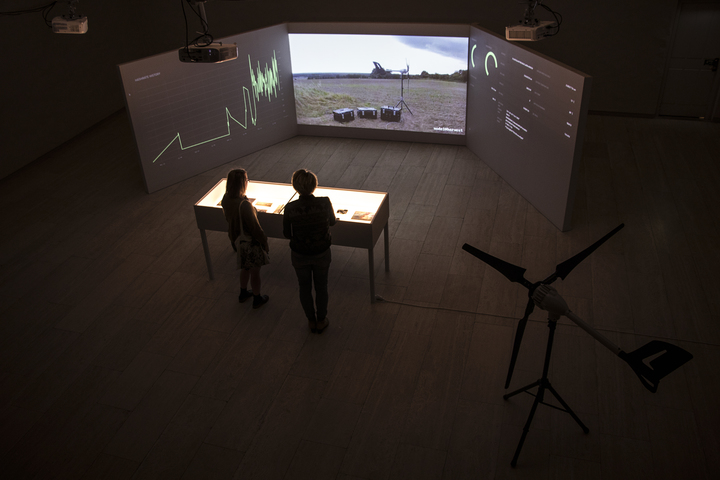 Julian Oliver - Harvest, Wind energy used to mine cryptocurrency to fund climate research, 2017. Photo by Alexandra Magnusson
Julian Oliver - Harvest, Wind energy used to mine cryptocurrency to fund climate research, 2017. Photo by Alexandra Magnusson
 Julian Oliver - Remote Install, 2013. Installation of Software Art as Software Art Installation
Julian Oliver - Remote Install, 2013. Installation of Software Art as Software Art Installation
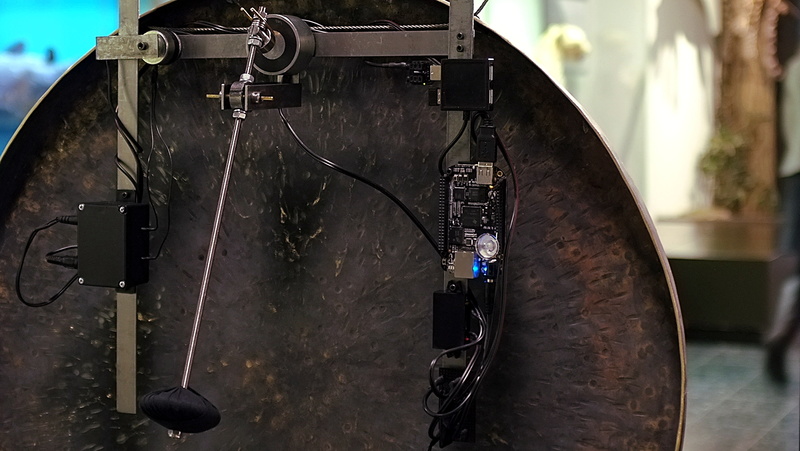 Julian Oliver, Crystelle Vu - The Extinction Gong, 2017. A ceremonial automaton for the Sixth Mass Extinction
Julian Oliver, Crystelle Vu - The Extinction Gong, 2017. A ceremonial automaton for the Sixth Mass Extinction
Julian Oliver is a New Zealander, Critical Engineer and artist based in Berlin. His work and lectures have been presented at many museums, galleries, international electronic-art events and conferences, including the Tate Modern, Transmediale, the Chaos Computer Congress, Ars Electronica, FILE and the Japan Media Arts Festival. Julian has received several awards, most notably the distinguished Golden Nica at Prix Ars Electronica 2011 for the project Newstweek (with Daniil Vasiliev). He is the co-author of the Critical Engineering Manifesto and co-founder of Crypto Party in Berlin, who’s shared studio Weise7 hosted the first three crypto-parties worldwide. He is also the co-founder of BLACKLIST, a screening and panel series focused on the primary existential threats of our time.
NYC Resistor is a hackerspace in New York, inspired by Chaos Computer Club and other hacker organizations. According to the NYC Resistor's website, "NYC Resistor is a hacker collective with a shared space located in downtown Brooklyn. We meet regularly to share knowledge, hack on projects together, and build community." [1]
NYC Resistor encourages participation by anyone who feels they can contribute. Nonmembers are welcome to attend Craft Nights and other public events, as well as take part in classes on a variety of subjects. Visiting beyond this can be arranged on a case by case basis with current members. [1]
And/Or Gallery is a contemporary gallery in Pasadena with an emphasis on new media exhibitions and editions.
The gallery originally operated in Dallas, Texas from 2006 to 2009 and has been written about in Art Forum and ARTnews, and was featured in the New Museum/MIT Press anthology Mass Effect: Art and the Internet in the Twenty-First Century. [1]
InterAccess is a Canadian artist-run centre and electronic media production facility in Toronto. Founded in 1982 as Toronto Community Videotex, InterAccess is Ontario's only exhibition space devoted exclusively to technological media arts. The Centre for Contemporary Canadian Art places the founding of InterAccess as a key moment in both the history of Canadian electronic art but also within a timeline of developments in international art, science, technology and culture. [1]
InterAccess’s mission is to expand the cultural significance of art and technology by fostering and supporting the full cycle of art and artistic practice through education, production, and exhibition.
We envision an environment in which:
- Art that engages technology gains widespread cultural resonance;
- Critical discourse dedicated to everyday and emerging technologies is catalyzed by artists, curators, and cultural workers;
- The full life cycle of art and artists is nurtured.
Annually we execute multiple exhibitions, a full curriculum of skill-building and critical theory workshops, and a broad range of discursive events that explore the impact of technology on the social, political and cultural aspects of contemporary life. Our studio space facilitates the circulation of skills and techniques required to produce the work we exhibit in our gallery space. [2]
In 1956, Philips engineers helped Nicolas Schöffer create CYSP I, which employed an “electronic brain” connected to sensors that enabled the human-scale kinetic sculpture to respond to changes in sound, light intensity and colour, and movement, including that of the audience. The whole sculpture moves on four rollers and its sixteen polychrome plates, which pivot and spin at different rates depending on external stimulus. It premiered in a performance with the Maurice Bejart dance company, interacting with the dancers on the roof of Le Corbusier’s Cité Radieuse, accompanied by concrete music composed by Pierre Henry. This early responsive, robotic sculpture is perhaps the first work of art to explicitly incorporate the principles of cybernetics (CYSP is an acronym formed from the first two letters of the words cybernetic and spatiodynamic). It has had an extensive exhibition history and the sculpture survives in the artist’s estate.
The whole is set on a base mounted on four rollers, which contains the mechanism and the electronic brain. The plates are operated by small motors located under their axis. Photo-electric cells and a microphone built into the whole catch all the variations in the fields of color, light intensity and sound intensity. All these changes occasion reactions on the part of the sculpture consisting of combined travel and animation.
For example: it is excited by the color blue, which means that it moves forward, retreats or makes a quick turn, and makes its plates turn fast; it becomes calm with red, but at the same time it is excited by silence and calmed by noise. It is also excited in the dark and becomes calm en intense light.
Inasmuch as these phenomena are constantly variable, the reactions are likewise ever changing and unpredictable, which endows the mechanism with an almost organic life and sensitivity.

